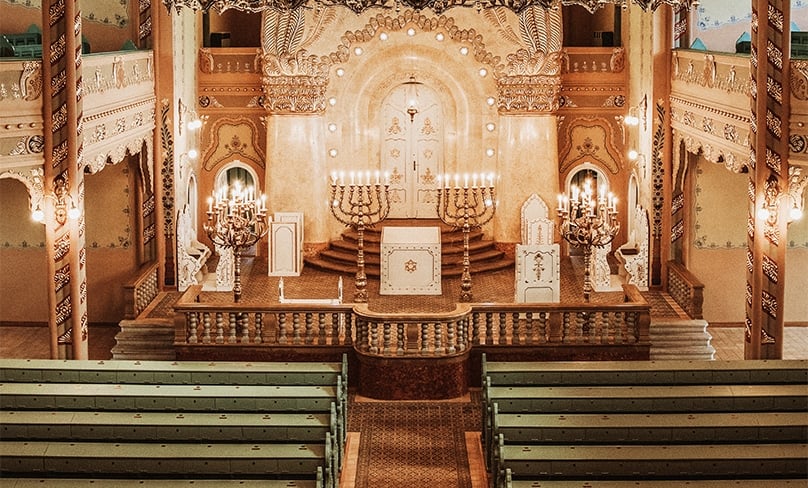
Dear Father, We know that Jesus often preached in the synagogue in different cities. I have some questions. What exactly was a synagogue and what activities took place there? When did synagogues come into existence, and what were the principal parts of a synagogue?
The word synagogue is Greek and it means “place of assembly”. It is a literal translation of the Hebrew term Beit K’nesset, meaning House of Assembly. The Yiddish term is shul, which is derived from the German word schule, meaning school, and it emphasises the synagogue’s role as a place of learning. The synagogue was, and is, the centre of the life of the Jewish community. It is a place of prayer, learning, social and charitable work, as well as being a social centre.
When did synagogues first appear? It is clear in the Old Testament that they did not exist in the first centuries after the Exodus, when the tabernacle, or tent of meeting, containing the Ark of the Covenant, was the focus of God’s dwelling among his people. The tabernacle was replaced by the Temple, built by Solomon in the tenth century BC. It seems that synagogues first appeared when the Temple was destroyed by Nebuchadnezzar II in the sixth century BC, and private homes were used temporarily for public worship and religious instruction. Synagogues were then built in the principal cities throughout Israel, and Our Lord preached in several of them.
The synagogue had a number of features which are obvious forerunners of features in a Catholic church. At the front of the synagogue was the sanctuary, where the prayer services were performed. In some synagogues today, the sanctuary is located in the part closest to Jerusalem, so that the people face Jerusalem when praying. In the early days of the Church, the sanctuary with its altar was often located in the Eastern part of the church, so that the people faced East, ad orientem, the direction of the rising sun, a symbol of Christ, the Sun of Justice.
Within the sanctuary of the synagogue was its most important feature, the Ark, an acrostic of the Hebrew words Aron Kodesh, meaning “holy cabinet”. The Ark was a cabinet embedded in the wall, and it contained the scrolls of the Torah, or Pentateuch, the five first books of the Bible. It is easy to see how the Ark containing God’s word became a Catholic church’s tabernacle, containing the very Word made flesh. Moreover, inside the Ark was a curtain, imitating the curtain in the Temple which separated the Holy of Holies from the rest of the Temple. Many tabernacles in Catholic churches today have a curtain inside the door, behind which is the ciborium containing the hosts of the Body of Christ.

In front of the Ark and slightly above it was the ner tamid, the Eternal Lamp, which God ordered to be placed in the tent of meeting and to be kept burning constantly: “And you shall command the sons of Israel that they bring to you pure beaten olive oil for the light, that a lamp may be set up to burn continually” (Ex 27:20). Here we see a forerunner of the sanctuary lamp in all Catholic churches, which is burning before the tabernacle whenever the Blessed Sacrament is present.
Another feature of the synagogue was the menorah, a six or eight-branched candelabrum with its candles lit during services. While the menorah in the Temple had seven branches, it was considered improper to make an exact duplication of any item in the Temple. The Catholic church today has candles lit on or beside the altar during the celebration of Mass or other ceremonies.
The synagogue also had a raised platform called the bimah, on which the scrolls of the Torah were placed when they were read. Some synagogues also have a lower lectern called an amud. Here we see the lectern, or pulpit, a feature of all Catholic churches where the readings are read and the homily is preached.
At the entrance to some synagogues was the mikvah, a bath for the restoration of ritual purity. A vestige of this bath may be found in the holy water font at the entrance to churches, so that those entering can bless themselves with the water.
Since the destruction of the Temple in Jerusalem by Titus in 70AD, synagogues have been the only place for Jewish worship. Some Jews believe the Temple will be rebuilt when the Messiah comes, and others say it will never be rebuilt.
[email protected]
